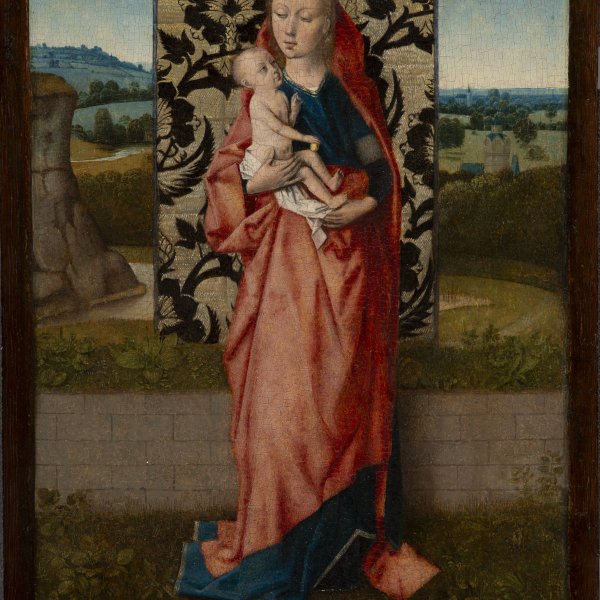Dirck Bouts (follower of)
Bouts was the leading member of a dynasty of Netherlandish painters and may have trained in his native city. Following possible periods in Brussels, Bruges and Antwerp, where he may have studied the work of Jan van Eyck and Rogier van der Weyden, he moved to Louvain. Between 1447 and 1448 Bouts married Katharina van der Bruggen, a young woman from a wealthy family with whom he had four children. In Louvain Bouts established an important and flourishing workshop in which he trained his sons as painters. Between 1457 until his death in 1475 Bouts is mentioned in numerous documents and was appointed official painter to his adopted city in 1468. The artist was said by Karel van Mander to be the founder of the Haarlem School and is now considered both its founder and most important figure together with Albert van Ouwater and Geertgen tot Sint Jans. Bouts’ principal contribution to 15th-century Netherlandish painting was his innovative depiction of landscape, which he represented with a new sense of depth and profundity. His paintings reveal his origins, particularly with regard to his approach to his portraits and their naturalistic style.
Little information is known regarding Bouts’ life or his early works, although in 1457 the artist had already moved to Louvain. Notable among his earliest works is the triptych in the Museo Nacional del Prado, Madrid. Many of his early works were previously attributed to Ouwater or to Petrus Christus. They reveal features that would be characteristic of his style such as the distant expression of the faces, the mastery of light, the soft shadows and in particular an interest in the landscape backgrounds, which are painted with great delicacy and refinement. The influence of Rogier van der Weyden is evident in Bouts’ approach to compositional arrangement, and his scenes are often framed by architectural elements. Only two documented works are known from his mature phase: The Holy Sacrament Altarpiece (Sint-Pieterskerk, Louvain) and the panels with The Justice of the Emperor Otto III (Musées Royaux des Beaux-Arts de Belgique, Brussels). A frequently repeated subject depicted by Bouts and his workshop is that of the Virgin and Child presented half-length. Few portraits have survived and most are part of larger compositions. They include the Portrait of a Man in the National Gallery, London, which may have been part of the right wing of an altarpiece.





